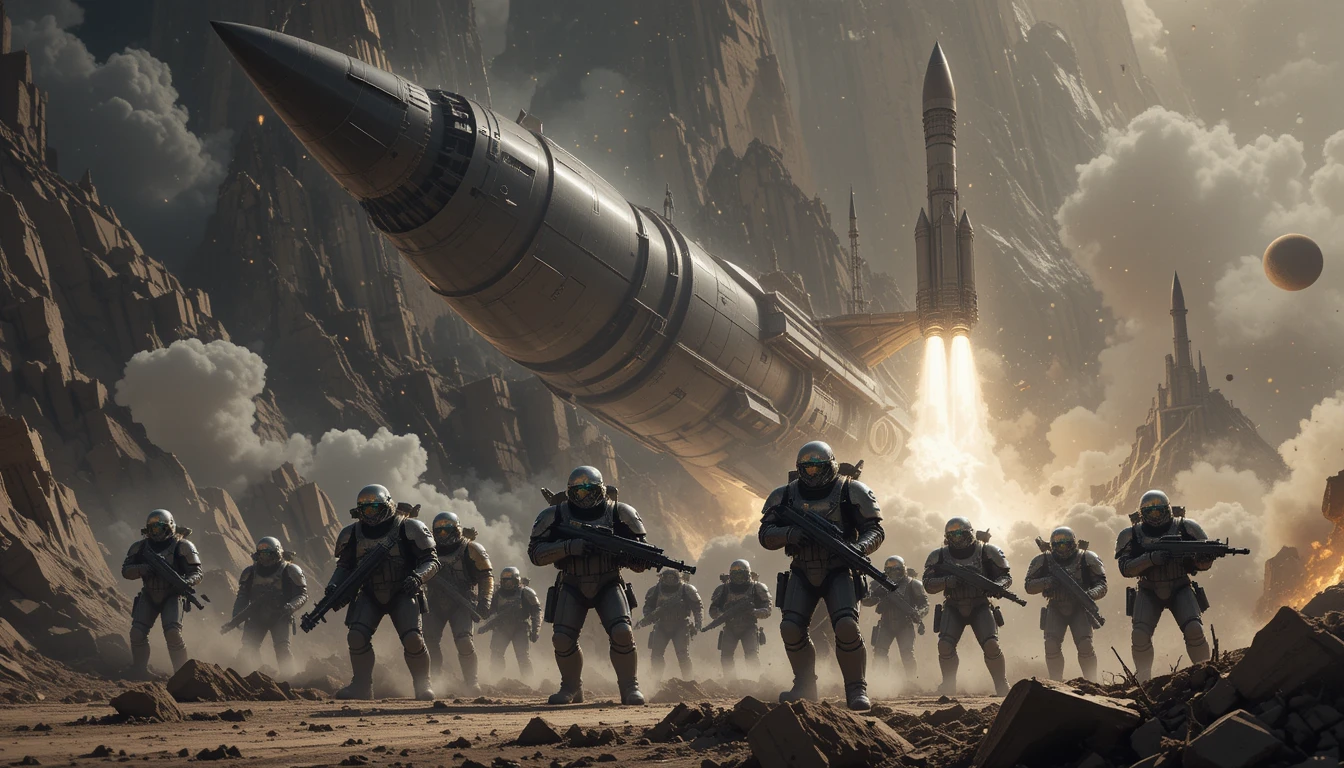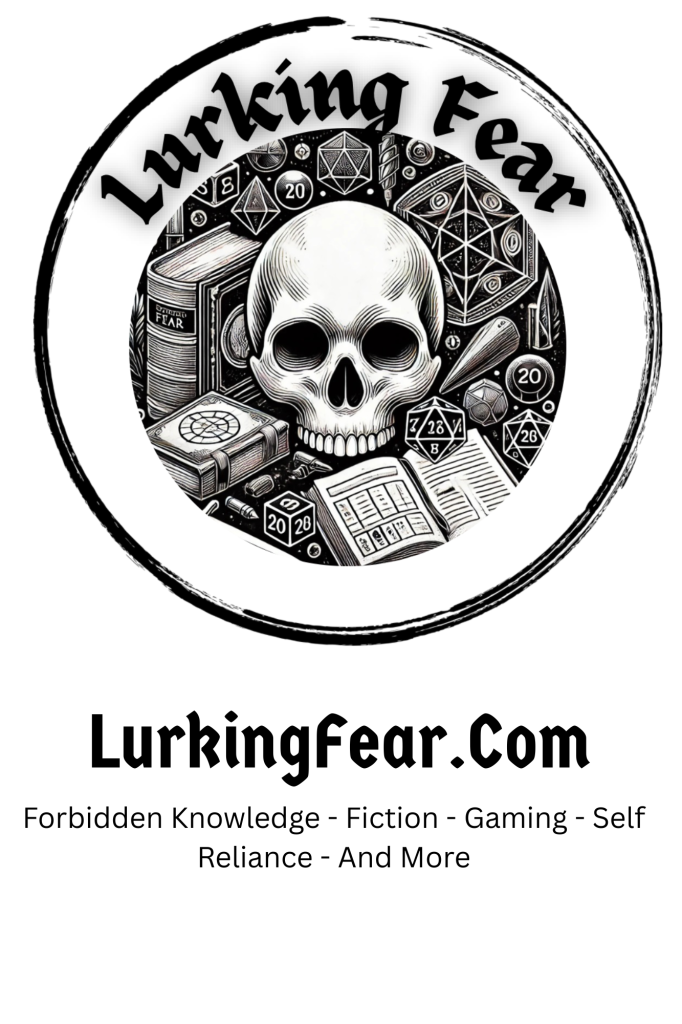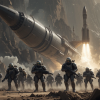
- Key Takeaways
- What is Science Fiction?
- Pioneering Science Fiction Authors
- Writing Your Science Fiction
- Science Fiction as a Mirror
- Global Science Fiction Voices
- Science Fiction Beyond the Page
- Conclusion
- Frequently Asked Questions
- What is science fiction?
- Who are the pioneering science fiction authors I should know?
- How do I start writing my own science fiction?
- How does science fiction reflect society?
- What are key subgenres of science fiction?
- Which global voices in science fiction should I explore?
- Where can I find science fiction beyond books?
Key Takeaways
- Science fiction mixes scientific reality with fantasy and allows you to push the boundaries of possibility while delving into future worlds and innovations. Respect your internal logic as immutable so that your world is believable and immersive.
- Core elements are at their best when they’re in the service of character and plot, not just spectacle. Create regular laws, maintain cause-and-effect compressed, and permit speculative concepts command significant choices.
- Big topics, such as space exploration, AI, and dystopias, resonate with real issues of identity, ethics, and social change. Have your story explore technology’s impact on daily and community values.
- Tropes change with culture, so rejuvenate old reliables by mixing in fresh viewpoints and contemporary concerns. Juxtapose ancient themes with contemporary twists to discover new angles that strike a chord in the present.
- Discover how world voices and innovators can expand your storytelling arsenal. Read translations and cross-era authors to observe how culture and history influence unique storytelling styles.
- When writing, pace your precision with momentum and clarity. Begin with a world-building checklist, sketch character arcs next to plot beats, map your stakes, and demonstrate the human impact behind each invention.
Science fiction is the literature of the future, technology, and big ideas. It ranges from space travel, AI ethics, biotech, and near-future cities, frequently mixing hard facts with human stakes. In clinics and wellness hubs, sci-fi informs how we discuss neurofeedback, psychedelics, and data privacy. In style and subculture, it steers daring shapes, eco-conscious fabrics, and narratives that convert consumers into devotees. Movies, books, and games stuff the world full of deep worlds that brands can poke with sensitivity and honesty. My lens combines IT grit and design craft, keeping the attention on actual use and tangible results. The following chapters then map the territory, central motifs, and how to deploy them now.
What is Science Fiction?
A genre rooted in “what if” and “what next,” science fiction (sometimes “sci‑fi” or “SF”) explores concepts using the instruments of science and the art of narrative. It outlines future civs, novel technologies, alternate universes, then probes how people live, love, and struggle there. The term “sci‑fi” gained popularity circa 1954 through Forrest J. Ackerman, but its origins are far deeper—Francis Bacon’s New Atlantis (1627) and Johannes Kepler’s Somnium (1634) charted initial thought-experiments. Across books, film, TV and games, SF mixes believable laws with fearless imagination, and it encourages readers to challenge boundaries we assume are rigid. Our lens is openly inclusive and pro-expression: the future belongs to everyone, not a narrow few.
Core Elements
Science fiction’s scaffolding is futuristic settings, advanced tools, and scientific plausibility. Plausible doesn’t mean perfect, it means the world’s rules hold steady.
Internal logic is important. If a clinic runs nanomedicine, its supply chains and failure modes and ethics boards have to make an appearance in the plot. That consistency builds credibility.
Speculative thoughts drive decisions. An AI triage system, which can save more lives, misreads bodies beyond its training data. A medic, coder, or patient then bears the conflict.
- Near- or far-future settings grounded in real constraints
- Technology as character: AI, biotech, cybernetics, propulsion
- Clear rule sets, consistent consequences, testable stakes
- Social systems: law, class, identity, care, and labor
- Curiosity about the unknown and the costs of knowledge
Major Themes
Space exploration challenges size, duration, and seclusion. AI wonders what qualifies as a mind. Dystopias examine power and the damage inherent in systems.
Identity, culture, ethics sit at the very core. SF allows a gender-neutral clothing label to model post-binary standards, or a health spa to try out stigma-free treatment with neurotech. It’s critique and blueprint simultaneously.
|
Theme |
What it probes |
Why it matters |
|---|---|---|
|
Space travel |
Limits of life and distance |
Expands human horizon |
|
AI and robots |
Agency, labor, bias |
Shapes daily decisions |
|
Biotech |
Bodies, consent, care |
Redraws health norms |
|
Dystopia/utopia |
Power and policy |
Warns or guides |
|
First contact |
Self vs. other |
Tests empathy |
Evolving Tropes
-
Aliens: From “menace” archetypes to kinship, diaspora, and mutual aid. Nowadays puts consent, language barriers, and communal survival at the forefront.
-
Time travel: From paradox puzzles to trauma, memory, and climate debt. Stories inquire who edits history and who foots the bill.
-
Cyberpunk: From neon nihilism to solarpunk and Afro/Indigenous futurisms. Emphasis moves to repair, community power, and design accessible.
-
Mad scientist: From lone genius to teams, open science, and audits. The drama shifts from shock to governance, transparency, and fairness.
Pioneering Science Fiction Authors
Science fiction sprouts from a centuries-old, worldwide procession of bold, experimental thinkers who employed narrative to probe invention, assert room for otherness, and plead for more open futures rooted in logic and compassion.
The Founders
Mary Shelley’s Frankenstein; or, The Modern Prometheus (1818) occupies the root. Through the 19th century, this breakneck pace of change—industrial tech, social upheaval—made her decision to connect science, ethics, and the marginalized seem revolutionary. Brian Aldiss would later dub it “the earliest germinal text to which the descriptor SF can be reasonably applied” in Billion Year Spree, an homage to how she shaped agency for the made, not just the maker.
Jules Verne pushed the genre in the direction of modern engineering fantasies. 20,000 Leagues Under the Seas (1870) mapped tech wonder onto a wide world, making oceans the stage for exploration and critique. H.G. Wells took out sharper social knives—The Time Machine and The War of the Worlds tested class, empire, and fear of the Other, lending literary heft to speculation and attracting critics who’d once dismissed ‘scientific romances.’
Compare styles and themes: Shelley’s moral inquiry and voice of the outsider, Verne’s methodical curiosity and logistics, Wells’s social pressure tests. All three contributed to legitimizing SF in serious circles by demonstrating it could support weighty concepts without letting go of human drama.
- Early global seeds matter: Mandeville’s Travels played with automata and strange human variants. Ibn al-Nafis’s Theologus Autodidactus combined narrative with factual science on metabolism and pulmonary circulation.
The Visionaries
The Golden Age (1940s–1950s) widened scope and reach. Isaac Asimov built social rules into tech—robot ethics and psychohistory—while Arthur C. Clarke linked cosmic awe to plausible physics, influencing film, telecom dreams, and global culture. Philip K. Dick took us inside unstable minds and systems, warning how power edits truth.
They forecast parts of our now: machine learning ethics, satellite networks, surveillance states, and identity drift in digital life. Their work became common parlance for movies, clinics, and classrooms everywhere.
Larry Niven and Poul Anderson would later spruce up hard SF with strong characterization — maintaining the scientific grit but writing people we could care about — which raised the bar for craft.
The Modernists
Octavia Butler centered consent, power, and community, giving voice to bodies and cultures long pushed out. Her stories guide real talk on equity in health, sex, and care.
William Gibson snagged networked life early, titling the mood of screens and brands and street wear that fuel identity.
Liu Cixin scales up to civilizational physics and risk, questioning what survival costs when the stakes extend light-years.
Recent standouts worth a look: Butler’s Parable series for justice and survival design, Gibson’s Pattern Recognition for brand culture and memetics, Liu’s The Three-Body Problem for first-contact strategy and physics awe.
Writing Your Science Fiction
Employ a transparent premise, respect inclusiveness and free speech, and fuse science with soul. Read broadly, identify the trope you’re employing, then take it someplace fresh without pretension. Keep hard vs. Soft science in mind, but let human stakes lead.
1. World-Building
Start from a core ‘what if,’ then continue asking, ‘and then what would happen?’ Construct a world with laws, legends and borders. It’s boring and enjoyable, and it counts for short stories and novels. Maintain timelines, maps, and a glossary to keep the facts straight.
Connect systems to science. If terraforming takes centuries, who profits and who burns? Map out politics, social hierarchies, and technology availability. Center inclusive structures: gender autonomy, disability access, post-colonial power shifts. If your clinic relies on AI triage, what checks the bias?
Checklist (trim to fit your project):
- Physics/biology rules
- Government/legal norms
- Economy and labor
- Culture, language, rituals
- Tech stack and limits
- Health, care, and ethics
- History, holidays, grief
2. Character Arcs
Readers stick around for characters. Write your characters to be multi-layered, with needs, wounds and blind-spots. A dentist on Mars demands secure implements, honor and a life.
Allow the world to sculpt growth. Microgravity bone loss, stigma choice shaping, new tech shortcut temptation. Motivations, aligned with the core conflict, so each scene either aids or impedes that pursuit.
Outline arcs beside plot beats: ordinary world, inciting event, midpoint choice, darkest hour, change. The little shifts add up—bravery, permission, support.
3. Plot Mechanics
Anchor plot in the speculative premise and hold stakes climbing in distinct increments. Cause and effect has to follow — if a wearable tames anxiety, black markets arise, regulators respond, clinics shift.
Twists should grow from the science: the patch dampens empathy. A gene edit flips inheritance. Sketch a diagram–setup, turns, midpoint reversal, crisis, climax, fall-out–so you can test logic and pacing.
4. Technology
Create tools that benefit the story, not the opposite. Show social impact: who gets it, who gets left out, who profits.
No more hour long lectures. Seed detail by action. Maintain a tech list with function, cost, risks and ethical notes. Hard or soft science, be consistent.
5. Narrative Voice
Choose a voice that suits intricacy and timbre. First-person intensifies intimacy. Close third equalizes scope and precision. Omniscient fits expansive systems. Make science vivid with simple language and specific details. Try bold formats—journals, chat logs, nursing notes—if they aid immersion without impeding flow.
Science Fiction as a Mirror
Science fiction mirrors the now by dramatizing ‘what if’ you futures that reveal how our decisions echo. Through cognitive estrangement—familiar problems illuminated in unfamiliar contexts—it hones incisive, reflective thinking and informs wiser decisions for now.
Social Commentary
The genre spotlights injustice, tyranny and environmental danger by turning the telescope. H.G. Wells traced class conflict in The Time Machine, Karel Čapek cautioned against labor abuse in R.U.R., which he dubbed “robot.” Kate Wilhelm’s Where Late the Sweet Birds Sang explored cloning and ecological collapse. These futures read as case studies for systems that hurt the most vulnerable.
It’s a venerable tradition to challenge power. Frederik Pohl and C. M. Kornbluth lampooned consumer capitalism in The Space Merchants. Nancy Kress’s Beggars in Spain asked about genetic privilege. Kazuo Ishiguro’s Never Let Me Go peeled away bioethics masquerading as care. The through line is clear: norms are not neutral, authority deserves audit.
Weaving commentary works best when it rides along with plot and character. A medic spa owner, tattoo artist or clinic director in a drought-struck city demonstrates climate as logistics, not lecture. A streetwear brand opting for recycled fibers under supply-chain surveillance renders sustainability a character decision.
Keep a short list of touchstones: The Dispossessed (utopia vs. Capitalism), Parable of the Sower (climate, community), Snow Crash (platform power), Children of Men (fertility, state), Severance (labor, disease), District 9 (xenophobia).
Ethical Questions
AI agency, gene edits and mass watch are default fault lines. Question who gains, who loses, who jumps out. Reveal a chatbot therapist who misreads trauma, a clinic that sells embryo edits for “wellness,” a city of public sensors that forecast “risk.
Offer multiple perspectives. Let the ethicist, the marketer and the patient argue for actual reasons. Put the struggle/drama/conflict at the heart of the arc so decisions cost.
Common questions to map:
- What rights do nonhuman minds get?
- When does enhancement become coercion?
- Who owns biometric data?
- How much opacity should algorithms have?
- What care is humane under scarcity?
Future Predictions
Science fiction tends to trend-guess, not just guess. Writers draft speculative cartographies—human emergence, consciousness, our position in an indifferent cosmos—to try out trajectories before we tread them, and to measure against techno‑totalitarian perils.
Foresight is about building resilience. Story sprints can guide design, as Nathan Shedroff and Christopher Noessel demonstrated by connecting fiction to interface patterns and user needs.
| Guess | Effort | Result | |—|—|—| | Video calls | 2001: A Space Odyssey | Common reality | | Organ farming ethics | Never Let Me Go | All the debate | | consumerist bombardment | The Space Merchants | precise pressure | | corporate states | snow crash | partial overlap | | Cloning conundrums | Where Late the Sweet Birds Sang | Finite reality | | Robot worker threat | R.U.R. | Genuine mechanization stress |
Global Science Fiction Voices
Sci-fi has many centers, not one. Non‑Western writers and directors blur the boundaries of the plot, broadening what qualifies as destiny, identity, and culture.
Cultural Context
Regional tales depend on local lore. In China, novels weigh collective duty and state scale, reflecting a rapidly modernizing nation, and readers in the West have come to recognize that lens. Nigerian and Kenyan writers incorporate oral cadence into pulsating near‑future city environments. Latin America work mixes myth with tech, and treats ghosts and code as equals.
Identity debates appear differently in queer Korean cyborg stories than in Brazilian riverine climate fiction. Medical ethics in Japanese biopunk comes across as intimate and procedural, in South Asian texts it might struggle with caste and care.
Study how context steers choices: which bodies get saved, which machines gain a voice, which laws bend first. Contrast alien‑contact narratives that respect kinship protocols in Polynesian contexts with First Nations narratives that regard land as an animate agent.
For tropes, map contrasts: time travel as duty to ancestors in West African epics versus paradox puzzles in European lines, dystopia as bureaucracy in Eastern Europe, as surveillance‑capital in global megacities.
Regional Styles
Unique signatures count. East Asia tends towards long arcs, civic scale, and cool tone. South Asia tips lush, syncretic, and ethical. The Arab world blends philosophy with migration and desert ecologies.
Pacing and mood pendulum by culture. Some Latin American ones meander, surreal. East European work can slice bleak and arid. Pacific writers weave slow place-time with fast tech rhythms.
Voice is formed by language and ritual. Translation has to bear honorifics, vocal echo and humor without seaworthy abrasion.
Hallmarks to log: Chinese macro‑engineering and state systems, Afrofuturism’s communal tech and sonic mythology, Indigenous futurisms focusing on land rights, Brazilian cli‑fi’s urban floodscapes.
Translated Works
Translation holds the door open for us all. It renders soaring Chinese futures readable overseas. The Wandering Earth displays planet-scale stakes that work in any theatre.
Nuance can slip. Wordplay, satire, and spiritual terms defy any one-to-one exchange, but clever crews preserve meaning and encourage fresh interpretations.
Read broadly to expand your scope. Lists above that feature Cixin Liu and Hao Jingfang and Nnedi Okorafor, Stanislaw Lem and Samit Basu, Chen Qiufan and Sofia Samatar, Tade Thompson, fanzines and forums that keep the conversation international.
Kepler’s Somnium, praised by Asimov and Sagan, sits alongside Mary Shelley, Swift, and Cyrano—evidence the genre always blended magic with sociological commentary. Fans, from fanzines to forums, transported that blend over to TV such as The Twilight Zone and Doctor Who, and into clinics, studios and brands that require futures that are effective.
Science Fiction Beyond the Page
Sci-fi exists outside of books. It forms our imagination of tech, space and power. It ignites arguments about morality and selfhood and whose voice matters. Our stance leans left: more access, more freedom to create, more room for people who do not fit the mold.
In Film
Movies scale concepts quickly, planting the public imagination with pictures that linger. They transform amorphous queries–AI rights, climate risk, surveillance–into people and locations we sense. That reach informs how we think about the future, from spaceflight to bioethics, and normalizes inclusive casts and queer, gender‑fluid heroes.
Groundbreakers establish the standard. Metropolis, 2001: A Space Odyssey, and Blade Runner pushed visual craft and moral weight. The Matrix and Arrival hung tech on free will and communication. Black Panther and Everything Everywhere All at Once expanded the multiverse who belongs. All demonstrate tech’s frontier—hope and peril—in balanced quantities.
Adaptations change the politics and tone. A book’s inside voice may turn into spectacle on screen, or a lean plot may bloom into social critique. Contrast Dune’s ecological faiths between iterations, or Annihilation’s trauma lens with the novel’s cool distance.
Construct a ten-year list tasting and tech-tracing. Trace how consequences change, how ethics wander from cold-war terror to data rights and climate justice.
In Television
Serialized TV allows its themes to breathe. Long arcs examine how systems wear people down, or how communities fight back. It belongs to worlds of parallel timelines, slow-burn revolts, and evolving norms.
Legacy anchors such as Doctor Who, Star Trek in its numerous incarnations, and The X-Files. Newer runs like The Expanse, Black Mirror, and Andor go deep on labor, borders, and state power. TV’s extended time allows creators to explore the price of advances, from gene edits to drones, and to demonstrate joy, care, and chosen family, in addition to tension.
List series with what they add: ethical debates, design breakthroughs, or representation that opened doors.
In Games
Games make ideas playable. Video and tabletop worlds welcome selection, ramification, and restoration. You experiment with guidelines—corporate influence, AI autonomy, scarcity of resources—and sense consequences, which lands more forcefully than a rant.
Player agency powers significance. In Mass Effect or Disco Elysium, choices sculpt law, body and truth. In tabletop mainstays such as Eclipse Phase or Starfinder, groups cocreate tomorrows that deconstruct today.
Make a list by feature: emergent story (No Man’s Sky), systemic ethics (Deus Ex), social deduction (Among Us), or co‑op care loops (Citizen Sleeper). Pay attention to how each regards tech’s upsides and downsides, and where it encourages actual innovation.
Conclusion
Science fiction dwells in the cracks between now and next. It maps what we dread, desire and construct. Ancient myths gifted us starships and artificial intelligence. New blood brings street grit and new tongues and bold shapes. Pages fuel screens. Screens bounce back to books, games and art. Fans try out the concepts in labs and code bases and little shops. Clear proof shows up in real gear: lab-grown meat, smart limbs, cheap sats, and clean power rigs.
To begin, choose a little ember. Establish a single guideline. Push it. Keep the human heart in the picture. A nurse on Mars. A teen coder in Lagos. A pain doctor in São Paulo. Little bets make great universes believable.
Have a rough or a plot seed? Make a connection. We’ll create something that’s right for today and still enduring in a decade.
Frequently Asked Questions
What is science fiction?
Science fiction is about visionary futures, futuristic technology, and alien planets. It inquires “what if?” with science, society and ethics as instruments. It combines plausible science and speculation to explore human decisions.
Who are the pioneering science fiction authors I should know?
Begin with Mary Shelley, H.G. Wells, and Jules Verne. Include Isaac Asimov, Arthur C. Clarke, Ursula K. Le Guin, and Octavia E. Ler. They formed essential motifs and established craft aspirations.
How do I start writing my own science fiction?
Start with a single obvious “what if” premise. Construct plausible laws for your universe. Invent characters with authentic ambitions and conflicts. Write quickly, research when necessary, then edit for clarity and coherence.
How does science fiction reflect society?
It reflects present anxieties, aspirations and morality. By shifting the setting—future, space, or alternate timelines—it reveals today’s issues: inequality, climate, surveillance, and identity. Distance aids readers in thinking straight.
What are key subgenres of science fiction?
Well-known subgenres are hard SF, space opera, cyberpunk, solarpunk, dystopian, post-apocalyptic, and alternate history. Each on their own tones and tech levels and social questions. Pick the one to suit your concept.
Which global voices in science fiction should I explore?
Read Liu Cixin, Nnedi Okorafor, Ken Liu, Vandana Singh, Tade Thompson and Hao Jingfang. Translated anthologies, too, exhibit diverse visions. International perspectives expand topics and subvert timeworn motifs.
Where can I find science fiction beyond books?
Experiment with movies, television episodes, audio casts, comics, and story-driven adventures. Search for lists of award winners, such as the Hugo and Nebula. Audiobooks and serialized podcasts provide immersive, portable narratives.







